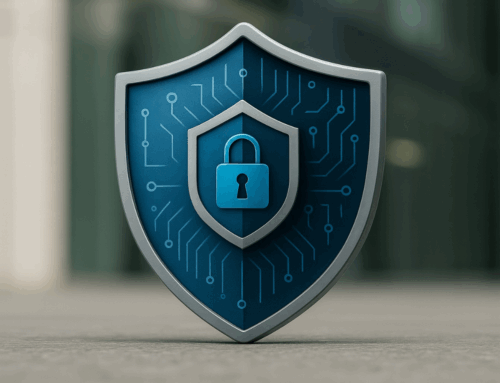Top Passwordless Login Solutions for Enhanced Security in 2025
Passwordless login eliminates passwords, enhancing security and user convenience. This article reviews the top passwordless login solutions for 2025, showing how they protect data and simplify login procedures.
Key Takeaways
- Passwordless authentication enhances security and user experience by utilizing public key cryptography, eliminating reliance on weak passwords.
- Everykey and biometric authentication methods, such as fingerprint and facial recognition, play critical roles in providing seamless and secure access to users.
- Integrating passwordless solutions with identity platforms and following a structured implementation plan can significantly improve security and reduce user friction in authentication processes.
Understanding Passwordless Authentication

Passwordless authentication, an open standard hosted by the FIDO Alliance, uses public key cryptography to eliminate the reliance on weak passwords. This method enhances security by removing the vulnerabilities associated with traditional passwords and reducing user fatigue from remembering multiple passwords. As cyber threats evolve, the need for more robust authentication methods becomes increasingly critical.
Beyond security, passwordless options significantly improve the user experience. They streamline account management and mitigate the complexities related to password reset and recovery processes. Imagine not having to reset forgotten passwords or manage multiple accounts—passwordless authentication simplifies these tasks, making the digital experience more seamless and less frustrating for users.
However, transitioning to passwordless authentication requires overcoming certain challenges, such as educating users about its advantages and adopting new industry standards set by the FIDO Alliance. Organizations must communicate the benefits effectively, ensuring users understand how these solutions enhance security and simplify their digital interactions.
Understanding Identity Security
Identity security is at the heart of a strong security posture for any organization, especially as digital transformation accelerates. It focuses on safeguarding user identities and ensuring that only authorized individuals can access sensitive data and critical resources. By implementing robust authentication methods—such as multi-factor authentication (MFA) and advanced factor authentication—organizations can significantly reduce the risk of unauthorized access and data breaches.
A comprehensive identity security strategy goes beyond just verifying users at login. It involves managing user identities, access rights, and privileges throughout their lifecycle, minimizing the risk of insider threats and lateral movement within the network. Secure access is achieved by continuously monitoring authentication activities and adapting security measures to evolving cyber threats. With the right identity security framework in place, organizations can confidently protect sensitive data, maintain compliance, and ensure that only the right users have access to the right resources at the right time.
Everykey’s Approach to Passwordless Login

Everykey stands at the forefront of passwordless authentication with its innovative proximity-based technology. Imagine walking up to your workstation and gaining access simply by being near it. Everykey’s system allows users to authenticate without touching any device, offering a frictionless and touchless secure access platform. Everykey evaluates user presence and context before granting access to applications and data, ensuring secure identity and access management. This approach not only enhances security but also provides a seamless user experience that surpasses traditional methods.
Security is paramount for Everykey. Key security features include:
- Device passwords are never stored on an Everykey server or product, ensuring that sensitive information remains protected.
- Everykey broadcasts an encrypted Bluetooth Low Energy message, changing its contents each time to prevent hacking attempts.
- Remote freezing capabilities prevent unauthorized use in the event that an Everykey is lost or stolen, offering peace of mind to users regarding lost devices.
Everykey’s mission is to make cybersecurity easy and convenient. By integrating credential management for passwords and passkeys, and enabling device lock and unlock features, Everykey provides a comprehensive solution that addresses modern security needs while simplifying user authentication.
Biometric Authentication for Secure Access

Biometric authentication plays a critical role in enhancing security for passwordless login solutions. Technologies like fingerprint and facial recognition have seen widespread adoption, significantly improving authentication methods and providing high security and efficiency for user authentication. With smartphones equipped with biometric features, the adoption of biometric authentication across various sectors has become more feasible and widespread.
Windows Hello for Business is a prime example of how biometric authentication can be integrated into enterprise environments. It allows users to sign in securely using biometrics or PINs on their operating system, ensuring that credentials are tied to the user’s PC and preventing unauthorized access. Similarly, the YubiKey Bio Series supports fingerprint recognition, adding an additional layer of security to passwordless authentication.
However, it’s important to acknowledge that biometric methods may present accessibility challenges for some users, necessitating alternative solutions. While biometric authentication offers significant security benefits, organizations must ensure that all users can access resources to secure authentication methods tailored to their specific needs.
Security Keys and Hardware Tokens
Security keys and hardware tokens are essential components of passwordless authentication, offering robust protection against cyber threats. FIDO2 security keys, for instance, eliminate the risk of password exposure by providing a robust, unphishable method for account authentication. These keys come in various forms, including USB, Bluetooth, and NFC, making them versatile tools for securing user access.
A single FIDO2 security key is capable of functioning with thousands of accounts. It can do this without the need to share any secrets. Users sign in using a hardware device that handles the authentication, leveraging public key cryptography for enhanced security. The YubiKey Security Key Series, for example, delivers FIDO-only security keys, ensuring secure login without the need for traditional passwords. The YubiKey 5 Series supports two-factor, multi-factor, and passwordless authentication, offering flexibility and strong security for various authentication needs. Security keys can be used as a second factor, providing an additional layer of security beyond just a password.
Security keys not only enhance security but also simplify the user experience by reducing the need for complex password management. They provide a tangible solution to the intangible problem of password vulnerabilities, making them a crucial part of modern authentication strategies.
Multi-Factor Authentication Without Passwords

Multi-factor authentication (MFA) is critical for protecting sensitive data, significantly reducing the risk factors associated with credential theft and unauthorized access. Implementing MFA without relying on passwords can dramatically enhance security and user experiences by leveraging advanced authentication methods.
For instance, the Microsoft Authenticator app enables passwordless access by sending notifications to users’ mobile phone devices, allowing them to approve login requests with a simple tap. Smart cards are another effective MFA solution, offering strong security by storing digital certificates for user authentication. These cards contain embedded microchips that provide secure access without needing traditional passwords. Additionally, users can enhance their security by using google authenticator for two-factor authentication and adaptive authentication.
Push notifications also play a vital role, enabling users to verify their identity quickly and conveniently, thus enhancing the overall security posture. By implementing effective MFA solutions without passwords, organizations can achieve greater security and reduce the friction associated with user authentication. This approach not only protects sensitive data but also improves user satisfaction by simplifying the login process.
Integrating Passwordless Solutions with Identity Platforms
Integrating passwordless solutions with identity platforms like Microsoft Entra ID and Azure AD can streamline user management and enhance security within the Microsoft ecosystem. Microsoft Entra ID supports various passwordless authentication methods, including FIDO2 security keys and Windows Hello for Business, enabling users to sign in securely without traditional passwords. This integration ensures a seamless single sign-on (SSO) experience, allowing access to cloud and on-premises resources without the need for multiple credentials. Passwordless solutions can be deployed both in cloud environments and on premise, providing flexibility for organizations with traditional local infrastructure.
Using FIDO2 security keys with Microsoft Entra ID provides a secure and seamless access experience. Platform Credential for macOS also facilitates passwordless sign-in using hardware-backed cryptographic keys, ensuring compliance with industry regulations and protecting user data.
Integrating passwordless solutions with identity platforms not only enhances security but also improves user experience by making access more efficient and reducing the need for password management. This approach supports a seamless user experience and ensures data privacy by securely storing biometric data within users’ devices, allowing them to integrate seamlessly and enabling easy integration.
Compliance Requirements for Passwordless Authentication
Meeting compliance requirements is a crucial consideration when deploying passwordless authentication solutions. Different industries are governed by specific regulations—such as PCI DSS for payment data, HIPAA for healthcare, and GDPR or CCPA for personal data protection—that mandate secure user authentication and access controls. For example, PCI DSS requires multi-factor authentication for all users accessing sensitive data, while HIPAA emphasizes the use of secure authentication protocols to safeguard electronic protected health information (ePHI).
To ensure compliance, organizations must implement passwordless authentication methods that support strong factor authentication and maintain detailed records of user authentication and access activities. Regular security audits, robust access controls, and adherence to industry best practices are essential for demonstrating compliance. By aligning passwordless authentication strategies with regulatory requirements, organizations can protect sensitive data, reduce the risk of data breaches, and build trust with users and stakeholders.
Industry Standards Shaping Passwordless Solutions
Industry standards such as FIDO2 and WebAuthn are revolutionizing the landscape of passwordless authentication. These standards provide a secure and interoperable framework for authentication protocols, enabling organizations to deploy robust passwordless authentication methods across diverse operating systems and devices. FIDO2, for instance, supports a variety of authentication options, including biometric authentication, security keys, and smart cards, ensuring flexibility and enhanced security for users.
By adhering to these industry standards, organizations can implement authentication solutions that are not only secure but also scalable and future-proof. Security keys and smart cards, built on these protocols, offer strong protection against phishing and other cyber threats, while biometric authentication delivers a seamless and user-friendly experience. Embracing these standards ensures that passwordless authentication solutions remain compatible with evolving technology and security requirements, providing a solid foundation for secure access and identity management.
Cost Effectiveness of Passwordless Login Solutions
Adopting passwordless login solutions can lead to significant cost savings for organizations. Traditional password-based authentication methods often require substantial investment in password managers, frequent password resets, and ongoing helpdesk support—all of which contribute to a higher total cost of ownership. By eliminating passwords, organizations can reduce these operational expenses and free up IT resources for more strategic initiatives.
Passwordless authentication methods also help mitigate the financial impact of data breaches by reducing the risk of credential theft and unauthorized access. When evaluating the cost effectiveness of passwordless solutions, it’s important to consider not only the initial implementation costs but also ongoing maintenance and the potential for long-term savings. Organizations that invest in passwordless authentication benefit from lower support costs, improved security, and a more efficient authentication process, making it a smart choice for both security and the bottom line.
Choosing the Right Passwordless Solution for Your Business Needs
Selecting the right passwordless login solution is essential to meet your organization’s unique security and operational requirements. Consider factors such as compatibility with existing infrastructure, the diversity of authentication protocols supported, and ease of integration with access management systems. Organizations should evaluate solutions based on their ability to support remote users and cloud environments, ensuring secure access regardless of location.
When choosing the right MFA solution, it’s important to consider your organizational size, specific security requirements, and budget. Small business owners should look for MFA solutions that are both cost-effective and scalable, addressing their unique needs and resource constraints. The shift to remote work has further increased the need for passwordless and MFA solutions that can support secure access for remote employees, helping to protect against the challenges posed by remote work setups, such as lost devices and distributed teams.
Moreover, compliance requirements such as PCI DSS and industry-specific regulations must be considered when choosing an authentication method. Solutions offering strong authentication, including adaptive MFA and biometric options, provide enhanced security while maintaining a seamless user experience. Balancing security needs with the total cost and ongoing maintenance of the solution will help in selecting the right tool for your business.
Best Practices for Maintaining a Strong Security Posture with Passwordless Authentication
Maintaining a strong security posture when implementing passwordless login involves continuous monitoring and adaptation. Organizations should adopt Zero Trust principles, requiring continuous verification and limiting the blast radius of potential breaches. Behavioral data can be leveraged to detect unusual access patterns and trigger adaptive authentication measures.
Regularly updating authentication protocols and ensuring compatibility with emerging standards will reduce risk from evolving cyber threats, including man-in-the-middle attacks. Training users on security best practices and managing lost devices effectively are also critical components. By following these best practices, businesses can maximize the benefits of passwordless authentication while safeguarding sensitive data and access resources.
Implementing Passwordless Authentication in Your Organization

Implementing passwordless authentication in your organization requires careful planning and execution. Start by:
- Conducting an audit of your current infrastructure to identify existing authentication methods and assess readiness for a passwordless transition.
- Considering compatibility with devices.
- Ensuring support from online services, as these are crucial factors to consider.
User education is essential for successful adoption. To achieve this, consider the following how tos:
- Communicate the benefits clearly.
- Provide a user-friendly experience that surpasses traditional systems.
- Conduct pilot testing with a small user group to identify potential issues before full-scale implementation, allowing for adjustments based on feedback that require users.
- Use phased deployment to reduce disruption and ensure a smooth transition.
Continuous monitoring and feedback collection post-deployment are key to maintaining the effectiveness of passwordless systems. Despite initial challenges, passwordless authentication can enhance business performance by reducing user friction during login, increasing customer retention and conversion rates, and significantly reducing the volume of password-related support requests, contributing to overall cost effectiveness.
Managing Lost Devices in a Passwordless Environment
In a passwordless environment, managing lost devices is essential to maintaining secure access and protecting organizational assets. When a device is lost, organizations should have clear procedures in place for users to report the incident promptly. Immediate actions—such as revoking access and re-enrolling new devices—help prevent unauthorized access and maintain security.
Leveraging mobile device management (MDM) solutions allows organizations to remotely lock or wipe lost devices, ensuring sensitive data remains protected. Adaptive authentication protocols can further enhance security by detecting unusual access attempts and requiring additional verification steps. By implementing a comprehensive lost device management strategy, organizations can provide a seamless user experience while minimizing the risk of security breaches, ensuring that users can regain secure access quickly and safely.
Enhancing Security Posture with Zero Trust Strategies
Zero Trust strategies are essential for modern cybersecurity, operating on the principle of ‘never trust, always verify’. Key aspects include:
- Incorporating multi-factor authentication methods, including passwordless techniques, to bolster security.
- Requiring strict identity verification for all users and devices accessing resources.
- Significantly reducing the risk of data breaches and unauthorized access.
Passwordless authentication can seamlessly integrate into Zero Trust policies, reducing user friction during the authentication process and enhancing overall security. Everykey empowers organizations to implement secure and employee-friendly Zero Trust strategies, ensuring a robust security posture while maintaining user convenience.
Incorporating Zero Trust strategies with passwordless authentication not only enhances security but also aligns with modern cybersecurity requirements, ensuring that organizations remain resilient against evolving cyber threats.
Addressing Common Concerns and Misconceptions
Despite its benefits, passwordless authentication often faces concerns and misconceptions. Some people mistakenly believe that it lacks security, but it actually offers a two-factor authentication experience through device biometrics, making it more reliable than traditional passwords.
Privacy concerns are another common issue, particularly regarding the potential threats of misuse of biometric data and mass surveillance. However, passwordless authentication is designed to balance security with user experience, ensuring that biometric data remains private and secure within users’ devices.
Addressing these concerns requires clear communication about the security and privacy measures in place. Organizations can alleviate fears and encourage adoption by providing a comprehensive guide on how passwordless authentication works and its benefits, ensuring that security and user experience are both prioritized.
Summary
In conclusion, passwordless authentication represents a significant advancement in cybersecurity, offering enhanced security and a seamless user experience. Everykey’s innovative solutions, combined with biometric authentication, security keys, and multi-factor authentication, provide robust protection against modern cyber threats. By integrating these solutions with identity platforms and adopting Zero Trust strategies, organizations can achieve a higher security posture while simplifying user access. Embrace the future of passwordless authentication to ensure your organization’s security and efficiency in the digital age.
Frequently Asked Questions
What is passwordless authentication?
Passwordless authentication enhances security and user experience by utilizing public key cryptography to eliminate the need for traditional passwords. This approach provides a more secure and convenient method for user verification.
How does Everykey enhance security?
Everykey enhances security through proximity-based technology, encrypted Bluetooth communication, and the ability to ensure a secure and touchless authentication process.
What are the benefits of biometric authentication?
Biometric authentication enhances security and efficiency through advanced technologies such as fingerprint and facial recognition, ensuring robust user authentication. This method significantly reduces the risk of unauthorized access.
How do security keys work?
Security keys operate by utilizing hardware-based authentication and public key cryptography, effectively reducing the risk of password exposure and providing secure, unphishable access. This method ensures a robust layer of protection against unauthorized access.
How can organizations implement passwordless authentication?
Organizations can effectively implement passwordless authentication by conducting an infrastructure audit, educating users, piloting with a small group, and deploying in phases while ensuring continuous monitoring and feedback. This systematic approach ensures a secure transition to passwordless solutions.



